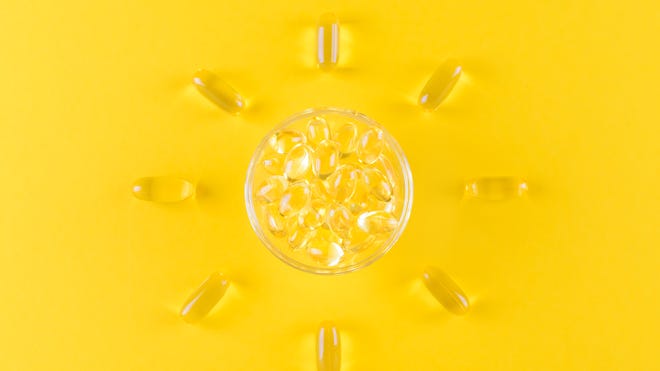Almost a quarter of Americans are thought to be vitamin D deficient. Are you one of them?
A 2022 study of National Health and Nutrition Examination Surveys (NHANES) data estimated that about 22% of Americans had moderate vitamin D deficiency. This number was higher for women, African Americans, people aged 20 to 29, and people in general during the winter.
“Many Americans are deficient in vitamin D due to limited sun exposure from indoor lifestyles, sunscreen use and our northern latitude,” Caroline Thomason, RD, a nutritionist in Washington, DC, tells USA TODAY. “Additionally, in North America, our typical diet is low in vitamin D-rich foods such as fatty fish and fortified products.”
The body absorbs vitamin D both through diet (both food and supplements) and from sunlight through the skin. It’s essential for “bone health, immune function, muscle strength, mental health, and possibly cardiovascular health,” says Thomason.
How can you be sure you are getting enough vitamin D? Here’s what the experts say.
How much vitamin D is needed per day?
The recommended dietary allowance, as prescribed by the Institute of Dietary Supplements, is as follows:
- 10 micrograms (400 IU) for infants up to 12 months
- 15 micrograms (600 IU) for 1 to 70 years
- 20 micrograms (800 IU) for those over 70 years old
For reference, a three-ounce serving of rainbow trout contains about 16 micrograms of vitamin D, while a cup of vitamin D-fortified milk contains about 3 micrograms, according to WebMD. Other foods high in vitamin D include fortified cereals (about 2 mcg) and orange juice (2.5 mcg).
It’s often difficult to get a full day’s worth of vitamin D from diet alone, so it’s also important to get outside—and sometimes supplement when doctors suggest it.
Many over-the-counter vitamin D supplements range from 25 to 125 micrograms (1,000 to 5,000 IU). You shouldn’t take more than 100 micrograms (4,000 IU) of vitamin D a day unless your doctor advises you to do so to combat a deficiency, says Thomason.
More:Bitter melon supplements are becoming more popular, but read this before taking them
What are the signs of low vitamin D?
Possible signs of vitamin D deficiency can range from “minor to severe,” says Thomason. They can include “muscle weakness, fatigue, mood changes, frequent infections, hair loss, bone pain, and slow wound healing.”
If you experience any of these symptoms, experts say it’s best to contact your primary care physician.
“The most reliable way to check your vitamin D levels is with a blood test, and it’s recommended that you consult with your healthcare provider for personalized advice,” says Thomason.
Who Should Not Take Vitamin D Supplements?
Vitamin supplements have become a hot tip for wellness influencers to offer their followers, especially in light of the vitamin D deficiency statistics in the United States. But experts caution against blindly adding supplements to your daily routine without consulting a doctor first.
Be especially careful about taking a vitamin D supplement if you have high calcium levels, a history of kidney disease, or if you take medications that can interact badly, says Thomason.
More:Kourtney Kardashian is selling rubber for vaginas. Experts widen their eyes.
“Influencers (are) often promoting the new ‘it’ vitamins and making strong health claims that they attribute to a supposed supplement program,” says Thomason. “This constant promotion creates trendy awareness, but can also lead to misinformation, unnecessary supplements, and even harmful health consequences. Influencer endorsements often place trends, social engagement, and popularity over scientific evidence, leading to a ‘one-size-fits-all’ approach.” and general statements that may not be suitable for everyone.”
#vitamin #day
